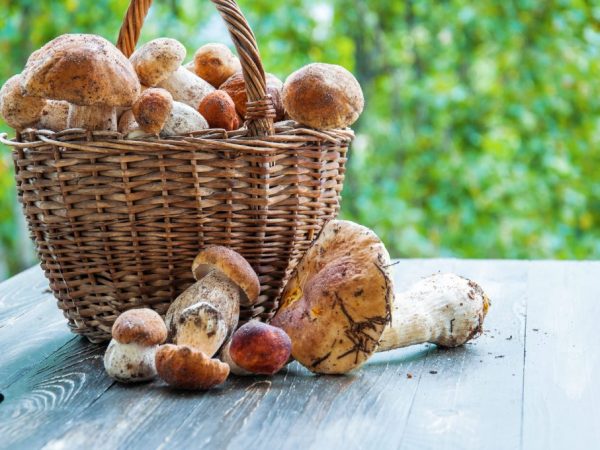What Mushroom Science Learns
For a long time, mushrooms have been attributed to the plant kingdom, therefore the science of mushrooms was part of the botanical sciences. The science of mushrooms is called mycology, as a separate science, it stood out in the 2nd half of the 19th century. The purpose of studying these two areas is to determine the beneficial qualities, opportunities for targeted use and toxicity of mushrooms.

Mushroom science
Subject of study
Mushrooms are a complete food source for humans and animals. They are easy to domesticate and grow quickly.
Translated from ancient Greek, the word "mycology" means "mushroom". Science studies:
- eukaryotic, heterotrophic organisms characterized by poorly differentiated tissues, their structure, vital activity, cyclic processes;
- taxonomy of mushrooms;
- ecology, physiology, genetics and biochemical properties of fungi;
- negative and positive effects of fungal spores on food;
- reactions of the human body to toxic substances secreted by heterotrophs and eukaryotes.
Mushroom-like microorganisms enter the kingdom of Fungi seu Mycota. They are not able to find their own food on their own, therefore they are forced to look for a source of food in the root system of trees or other living organisms (for example, insects). Unlike plants, their development does not depend on photosynthesis, which allows them to grow normally in shaded areas.
Many representatives of the mushroom kingdom are not parasites, but live in full interaction with trees. The black truffle forms a witch circle around its power source. Weeds do not grow near the tree, on the root system of which it was formed, because the mushroom destroys them. It increases the ability of the roots to absorb oxygen, water and nutrients from the soil.
Development of science
Mycology is closely related to many branches of economic science, namely: phytopathology, medicine, veterinary medicine, pharmacology, soil science, etc.
Irina Selyutina (Biologist):
Like any science, mycology has its own history. It is conventionally divided into several periods, and in 1940 L.I. Kursanov, a Soviet botanist, identified the main periods in the development of mycology:
- The first, or old: from antiquity to the middle of the nineteenth century.
- Second, or new: from the middle to the end of the nineteenth century.
- The third, or newest, continues to this day.
The modern period of the development of mycology cannot be imagined without the works and achievements of scientists from other eras.
The science that studies mushrooms is constantly evolving, new directions appear.
In addition to the above aspects, mycology studies the stability of the life cycles of fungi, with the aim of using their features to interact with other representatives of the flora.
This approach is influenced by several factors:
- Basidiomycetes are not only parasites, but also serve as a tool to improve the quality of plant life.
- They absorb toxins from the environment, purifying it.

Mushrooms are widely used in medicine
The use of mushrooms will solve the problems of nutritional deficiencies, soil depletion, and environmental pollution.
Many heterotrophic organisms have strong antioxidant, antibiotic effects. Some substances that make up the poisonous representatives of the kingdom help to reduce tumors of various origins and increase the tone of the body.
Use of knowledge
Over time, any soil is depleted, which leads to a deterioration in the quality of products, provokes the spread of diseases that are dangerous to animals and humans. Studying the structure and interaction of fungal organisms with the outside world, scientists create fertilizers from a number of microorganisms, including fungi.
Irina Selyutina (Biologist):
A striking example of the potential of fungi as a source of new compounds is cyclosporin, a substance isolated from a soil fungus. This cyclic molecule consists of 13 amino acids, one of which was first discovered in the composition of a substance. Cyclosporine suppresses the immune responses that occur during organ transplantation, without having the undesirable properties of other drugs that are used for these purposes. They kill bone marrow cells - the source of all blood cells, which is fraught with the development of leukemia. The action of cyclosporine on the immune system was discovered on January 31, 1972 in the laboratory of the pharmaceutical company Sandoz in Basel (Switzerland), and already in 1979 this substance was obtained by this company on an industrial scale. The discovery of the drug made it possible for heart and other organ transplants in the early 1980s.
Vaccines and serums are being developed to eliminate parasites. It was found that fungal spores accompany a person throughout his life. There are microorganisms living on the skin of a person and are completely invisible, they provide him with protection from the negative effects of the environment. When the normal functioning of the body is disturbed, the balance of the body's environment is disturbed (on the surface of the skin and in the body itself), their number grows rapidly, which leads to various diseases.
Doctors-mycologists
The study of diseases provoked by fungi is carried out by a mycologist. He diagnoses, carries out preventive and therapeutic measures for fungal diseases: different types of lichen. Advanced diagnostic techniques allow you to quickly identify the fungus, determine its nature and origin.
Diseases treated by a mycologist are called mycoses. They can be of several types:
- Dermatomycosis: the pathogen affects the skin and nails.
- Candidiasis: the fungus "occupies" the mucous membranes and tissues of the internal organs.
Conclusion
Mycology as a science deals with the study of fungal organisms in various directions. In total, to date, more than 100,000 species of fungi have been described, and mycologists talk about at least 250,000 more. All of them are an integral part of nature and the human life cycle. Among them there are useful and poisonous microorganisms, as well as mushrooms familiar to us, which fans and lovers of "quiet hunting" are happy to collect in the forests.



